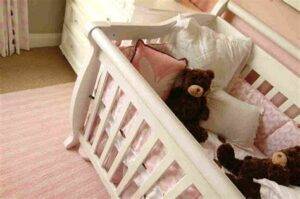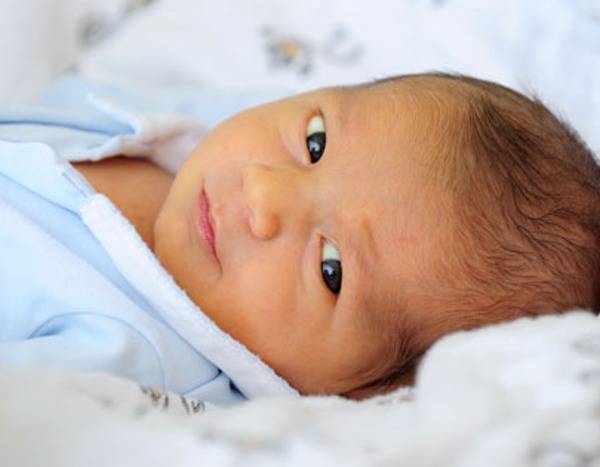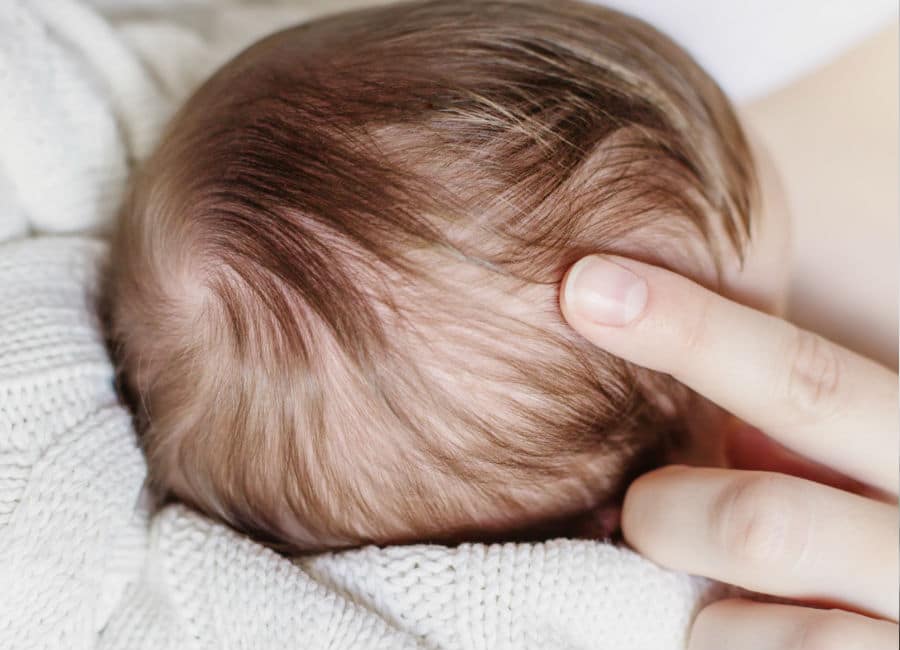Table of Contents
Every parent’s foremost concern is keeping their child safe and secure. An important starting point is to make your home baby-friendly. This involves identifying any potential danger zones and taking proactive steps to protect your child from harm.
Prioritizing your baby’s safety by implementing home safety measures is crucial in creating a secure and nurturing environment for their overall well-being. In this write-up, we present you with a guide to baby-proofing to safeguard your home effectively.
What Is BabyProofing?
Baby proofing is ensuring safety for babies and young children. This involves recognizing possible dangers and implementing measures to avert accidents and injuries.
Additionally, babyproofing entails teaching caregivers and family members about secure practices and routines, which include never leaving a child alone near water or in an automobile, and examining items like toys, to ensure they are suited for the child’s age and do not contain small parts that can be a choking hazard.
Here Is The Ultimate Baby Proofing Checklist
The best time to baby-proof your home is way before your baby arrives. This is because some preparations will take time to set up and that might not be as easy to do when your baby starts to crawl, around six to ten months after birth.
Additionally, baby-proofing doesn’t only focus on your little one but also includes those risks and hazards that could harm you while caring for your baby. Think about slippery floors and unstable furniture.
Secure Cabinets and Drawers

Are you concerned about your child accessing your cabinets or drawers? Securing your cabinets and drawers tops your checklist while you babyproof your home. Children tend to be marvelously curious little explorers.
You may have noticed your kid relentlessly trying to open drawers and cabinets to peek inside. Such exploration becomes dangerous if there are harmful chemicals or sharp objects stacked inside.
There are uncomplicated remedies to this problem. You can choose to fix a childproof lock or latch, which effectively bars your child from opening doors or drawers. You could also have magnetic locks, adhesive locks, or sliding locks. Choose which suits you best.
These alternatives are user-friendly for adults, guaranteeing that you can still access your possessions whilst keeping them out of reach for children.
But not all locks are created equal. For example, stick-on plastic latch locks, while inexpensive, can damage the wood on your cabinet doors and are often less durable. Instead, consider magnetic locks. These can be mounted on the inside of cabinets, offering the same safety features but with a cleaner look and easier adult access.
Why Choose Magnetic Locks?
- Damage-Free Installation: Unlike stick-on latches, magnetic locks don’t harm your cabinet doors.
- Discreet and Efficient: Mounted inside, they keep the exterior of your cabinets looking sleek.
- Easy for Adults: While secure for children, magnetic locks can be effortlessly unlocked by adults using a magnetic key.
Opting for these modern solutions ensures that your child’s curiosity doesn’t lead to dangerous situations, while also maintaining the integrity and appearance of your cabinetry.
Use Outlet Covers
For young children, electrical outlets pose a serious threat as they are tempted to stick their fingers or objects into them. One solution is to use outlet covers that effectively conceal all outlets within your home.
Select the cover that best suits your preference and needs. There are a variety of cover styles such as plug-in covers, sliding covers, and screw-in covers.
Hide Electrical Cords
Your appliance’s cords, whether in use or not, should be hidden from the sight and reach of young children. Cords sprawling on the floor can be attractive to crawling babies. They unwittingly see these as something to pull or gnaw with their teeth.
It is hence important to hide these cords behind walls, furniture, and appliances to prevent tripping and slipping for adults, or worse, injury to your baby.
Install Safety Gates
When safeguarding your home for your baby, safety gates are essential. They work wonders in preventing your little one from entering areas of the house that are unsafe or forbidden.
Safety gates come in different forms, such as pressure-mounted gates, hardware-mounted gates, and retractable gates. Based on your needs, go for the type that can efficiently block off the areas you want to keep out of bounds.
Anchor Furniture
Young children tend to climb or tug on furniture which can result in hazardous toppling accidents. To prevent this, secure all furniture to the wall, including dressers, bookcases, and televisions, by making use of furniture anchors or brackets.
Cover Sharp Corners and Edges
Young children are prone to bumping into sharp corners and edges of furniture and countertops which can lead to injuries. As a remedy, cover these spots with protective materials like corner guards or edge protectors made of plastic, rubber, or foam.
Secure Windows and Doors
We recognize the danger posed by windows and doors. Little children can easily open them and risk falling or hurting themselves. Preventive measures include installing window locks, guards, and door locks. Ensure to lock securely when not in use.
Use a Baby Monitor
A baby monitor keeps an eye on the activities of your child while you’re away. Various options are available, such as audio, video, as well as smart monitors.
Keep Hazardous Materials Out of Reach
It goes without saying that dangerous materials such as cleaning items, medicines, and chemicals, should be kept away from young children. Cabinets or drawers with childproof locks or latches should store these materials. Better yet, invest in a safety cabinet or box for additional protection.
Remove Choking Hazards
Small objects like coins, buttons, and beads present a choking hazard for young children and so, clearing away any small items within their reach, including toys, ornaments, and other household objects is necessary.
Stay alert and make regular checks on the floor and other surfaces to ensure the area is free of any potential choking hazards.
Check for Loose or Frayed Cords
Inspect electrical cords in your household for safety concerns of curious children who tend to tug or gnaw on them. Look out for any signs of wear or harm, such as loosened plugs or shabby cords, and replace them with new ones accordingly.
Use Non-Slip Mats
Smooth surfaces such as tile, hardwood, and linoleum pose a risk of slipping and falling for young children. To prevent such accidents, place non-slip mats in high-risk areas like the kitchen, bathroom, and entryways.
Install Smoke and Carbon Monoxide Detectors
To ensure your family’s safety from fire and carbon monoxide poisoning, it is important to have smoke and carbon monoxide detectors. Ensure to install them on every level of your house including outside bedrooms.
Check the Temperature of Hot Water
Young children can sustain burns and scalds when exposed to hot water since their body temperature regulators aren’t as effective as adults. Always check the temperature of your hot water. We recommend maintaining hot water at 120 Fahrenheit or lower.
Keep Small Appliances Out of Reach
Small appliances, such as coffee makers, toasters, and blenders, can be hazards to small children. They may try to touch heated surfaces or pull on cords. To avoid accidents, keep these appliances out of their reach and store them in locked cabinets.
Create a Safe Sleeping Environment
Creating a safe sleeping space for your baby is essential in reducing the risk of Sudden Infant Death Syndrome. Ensure your baby sleeps on their back on a firm mattress, and eliminate any loose bedding or soft items from the crib.

Childproofing vs. Baby Proofing: What’s the Difference?
Ensuring the safety of children calls for parents to take up two critical duties – childproofing and baby-proofing. Despite the terms being used interchangeably, they apply to distinct methods of ensuring home safety.
Additional Baby proofing Tips to Consider Throughout the Home
Here are some key childproofing and baby-proofing differences:
- Ensuring the safety of children in a household at any stage of their development is the basic objective of childproofing. This includes measures like securing heavy furniture, covering electrical outlets, and locking up hazardous chemicals.
- Babyproofing is a focused approach to protect infants who are just starting to crawl and explore. This includes measures like adding gates to block off stairs, covering sharp corners, and removing small objects that are choking hazards.
- It is crucial to differentiate between childproofing and babyproofing so that parents can customize their safety precautions based on their child’s individual requirements.
- Childproofing and babyproofing are continuous processes. As children progress and acquire new abilities, parents must evaluate their safety precautions and modify them accordingly. To do this effectively, take the time to sweep your living environment in a way that’s personalized to your own family and lifestyle.
- Consider the big and small things you interact with at home and their potential safety implications. Regular reassessment is crucial as your child ages and develops new skills, such as crawling or pulling up, or as your home undergoes changes.
- Here are some steps to guide you:
- Look from their perspective: Get down to your child’s level and see the world through their eyes. This helps in spotting potential hazards you might otherwise miss.
- Evaluate all areas: Don’t just focus on obvious danger zones like the kitchen or bathroom. Living rooms, bedrooms, and even hallways need attention.
- Update regularly: Schedule periodic safety checks to ensure your home adapts to your child’s growing abilities.
- By maintaining a vigilant and adaptive approach, you can create a safer environment that grows along with your child.
- The prime objective of childproofing and babyproofing is to establish a secure and protected surrounding, where children can safely discover and gain knowledge without encountering needless hazards.
Practical Baby proofing Steps for Your Home
To further ensure your home is safe for your little one, consider these additional babyproofing tips:
- Check Doorstops: Many have removable caps that pose a choking hazard. Replace or secure them to prevent accidents.
- Clear Cosmetics and Shampoos: Remove these items from sink and tub ledges as they pose a poison risk.
- Cover Radiators and Heating Vents: Prevent burns by covering these potentially dangerous areas.
- Stow Toy Batteries Safely: Batteries can leak acid, causing serious burns. Keep them out of your child’s reach.
- Verify Houseplants: Ensure all houseplants are non-toxic varieties, as some can be extremely poisonous.
- Lock Liquor Cabinets: Alcohol can be poisonous to young children. Place locks on these cabinets.
- Install Safety Gates: Place gates at the entrance or exit to any room that’s off-limits to your baby, such as a formal living room, office, or stairs.
- Use a Playpen or Child Seat: In areas that can’t be fully babyproofed, a playpen or child seat can provide a safe space.
- Vacuum Regularly: Suck up loose change, paper clips, or any other small items that can cause choking.
Baby Proofing for Pet Owners: How to Ensure Your Furry Friend and Baby Coexist Safely
Bringing in a new family member can be a nerve-wracking experience for pet owners. Considering the well-being of your furry companion along with the new human addition can be quite overwhelming. Nevertheless, by preparing yourself and your pet, you can have a secure and harmonious coexistence between your pet and baby.
To ensure your baby’s safety at home, you need to initially establish a secure environment for them. You can achieve this by putting up a baby gate or constructing a playpen in a specific section of the house.
Select a spot that is inaccessible to your animal companion and adequately spacious for your little one to enjoy.
Training your pet to interact with your newborn is very important. You can achieve this by gradually acquainting your pet to your baby while being watchful of their interactions. Offering treats and positive reinforcement for desirable behavior can also be beneficial.
Baby proofing Tips for the Nursery
Creating a safe space for your baby is crucial. Here are some essential babyproofing tips to ensure your nursery is both functional and secure:
Storage and Furniture Selection
Opt for Multi-purpose Furniture:
- Choose dressers with detachable toppers. These provide a safe changing table initially and can transform into a regular dresser as your child grows.
- Ensure all furniture is securely anchored to the walls to prevent tipping.
Proper Storage Solutions:
- Have designated storage for every item in the nursery. This keeps the space organized and minimizes hazards.
- Use open bins for toy storage to avoid the dangers posed by boxes with heavy lids.
Decorating and Layout
Safe Wall Decorations:
- Avoid hanging anything above the crib or changing table that your baby might grab and pull down.
- Instead of framed pictures, consider painting an accent wall, using peel-and-stick wallpaper, or applying wall decals for a stylish yet safe aesthetic.
Floor Safety:
- Place a thick piece of carpet or a soft rug in the nursery. This can cushion any potential falls and adds warmth to the room.
Regular Safety Assessments
Routine Checks:
- Periodically review your nursery setup to ensure it remains safe as your child grows. For instance, verify that new toys do not pose choking hazards and are stored safely.
- Once your child starts climbing out of the crib, consider switching to a toddler bed to prevent falls.
Specific Safety Measures
Electrical Safety:
- Use UL-listed night-lights and replacement bulbs to ensure they meet safety standards.
Door Safety:
- Install finger-pinch guards on door hinges to protect tiny fingers.
By following these baby proofing tips, you can create a nursery that’s both beautiful and safe for your little one.
How Can Using a Playpen or Child Seat Help in Areas That Can’t Be Fully Babyproofed?
Keeping your child safe is a top priority, especially in areas of your home that can’t be completely babyproofed. Here’s how using equipment like a playpen, child seat, or swing can make a difference:
Contained Environment
A playpen offers a confined, yet spacious area where your baby can play safely. This helps prevent them from reaching hazardous items or areas that you haven’t been able to secure.
Mobility Control
Child seats and swings keep your baby stationary and engaged, reducing the risk of them crawling or walking into unsafe zones. This can be particularly helpful in rooms with exposed electrical outlets or sharp corners that can’t be covered.
Peace of Mind
By using these tools, you can ensure that your baby is in a secure environment, allowing you to focus on other tasks without constant worry. Whether you’re cooking in the kitchen or quickly stepping out of the room, you’ll have peace of mind knowing your child is safe.
Benefits At a Glance
- Safety: Limits access to potentially dangerous areas.
- Convenience: Makes parenting tasks more manageable.
- Flexibility: Can be easily moved from room to room.
Make Your Home Safe For Your Little One
Establish a safe and risk-free space for your little one, hence, ensure your abode is baby-proofed. Identify and mitigate any potential dangers while putting in place adequate preventative measures that will guarantee your child’s well-being.
Omega Pediatrics recommends you follow the comprehensive baby-proofing checklist to guarantee a secure and protected home for your little one.
What are some considereations for keeping medications and cleaning supplies safe in the bathroom and laundry room?
When it comes to ensuring the safety of young children, taking extra precautions with medications and cleaning supplies in the bathroom and laundry room is crucial. Here are some practical tips to keep these items secure and out of reach:
Bathroom Safety Measures
Store Medications Properly: Always keep prescription and over-the-counter medications well out of children’s reach. Utilize high shelves or cabinets with child-proof locks. Although child-resistant packaging offers some security, it’s not foolproof, as toddlers can be surprisingly adept at opening them.
Secure Cleaning Supplies: Items like hand sanitizers, disinfecting wipes, and decorative soaps can seem enticing to young children. Make sure these are stored in locked cabinets or on high shelves. Even seemingly innocuous items can be dangerous if ingested.
Bathtub Safety: Install nonslip strips in the bathtub to prevent falls. A toilet lock can also be a wise addition to keep curious toddlers from exploring the toilet.
Appliance Storage: Keep all plug-in appliances, such as hairdryers, out of children’s reach. Store them in cabinets after use to prevent accidents, including the risk of appliances falling into water.
Supervision: Always supervise your child in the bathroom. Remember, babies can drown in just a few inches of water, so never leave them unattended.
Laundry Room Precautions
Laundry Pods and Detergents: These colorful items can attract children, but they are toxic if ingested. Store all laundry detergents, pods, and other cleaning supplies in locked cabinets or on high shelves.
Chemical Safety: Items like bleach and fabric softeners should also be kept secure. Ensure they are in tightly closed containers and stored away from where children can access them.
Child-Proofing Cabinets: Install child-proof locks on all cabinets that contain cleaning supplies. This will provide an additional layer of security.
Key Points to Remember
Get on your hands and knees to evaluate what a child could potentially access.
Regularly clean bath toys and check for any potential hazards within children’s reach.
Add consistent supervision: Always be present when your child is in areas with potential dangers.
These guidelines can help you significantly reduce the risk of accidental poisonings and injuries, ensuring your home is a safer environment for your children.


